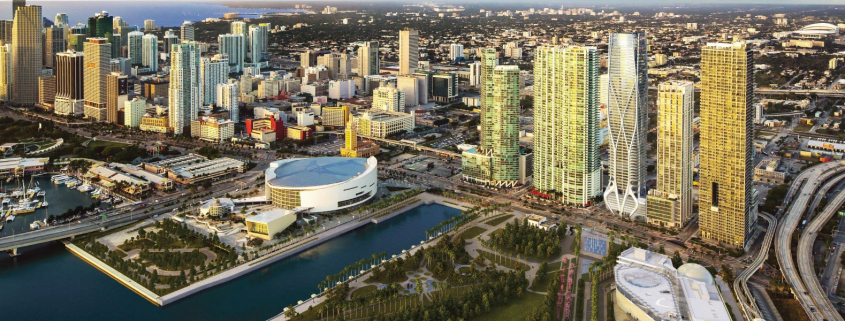With 41.6 percent of its office space considered “green,” Miami ranked ninth of 30 markets on the 2015 Green Building Adoption Index, a joint project of CBRE Group, Inc. and Maastricht University.
For the purposes of this report, “green” office space is defined as holding either an EPA ENERGY STAR label, U.S. Green Building Council (USGBC) full-building LEED certification or both. Using square feet as a measure, 41.6% of Miami’s office market is “green” – well above the national average of 38.7%. Moreover, Miami ranked particularly well in terms of number of buildings considered green – over 17%. By square feet, 21.84% of Miami’s office market has a LEED certification, and over a third of the office market is ENERGY STAR rated.
This is the second year in a row that Miami ranked ninth on the list, behind U.S. cities such as Minneapolis, which led the Green Building Adoption Index’s city ranking for the second consecutive year with 70.4 percent of all office space currently qualified as green (down from 77.0 percent in 2014.) San Francisco, again in second place, significantly closed the gap and now boasts a 70 percent green market, up from 67.2 percent in 2014. Chicago, at 63.4 percent, was third, while Atlanta (57.8 percent) and Houston (52.9 percent) swapped positions at fourth and fifth. The top 10 cities on the 2014 list all retained a place on the 2015 list.
The study also found that owners of small buildings have an opportunity to differentiate themselves by implementing energy-efficient practices, due to a significant gap between large and small office buildings in achieving sustainability certification. For example, 62.1 percent of office buildings in the U.S. greater than 500,000 square feet are considered green. In contrast, only 4.5 percent of all U.S. office buildings less than 100,000 square feet qualified as green.
“Our 2015 study confirmed that green building adoption has been primarily a big building, first-tier city phenomenon,” said David Pogue, CBRE’s global director of corporate responsibility. “It would appear that many smaller buildings in the majority of large markets still have an opportunity to be ‘best in class’ among their peer set by achieving these certifications.”
Executed in close collaboration with the USGBC and CBRE Research, this is the second release of the annual Green Building Adoption Index. Based on a rigorous methodology, the Index shows the growth of ENERGY STAR- and LEED-certified space for the 30 largest U.S. office markets, both in aggregate and in individual markets, over the previous 10 years.
Sources: CRE-sources







